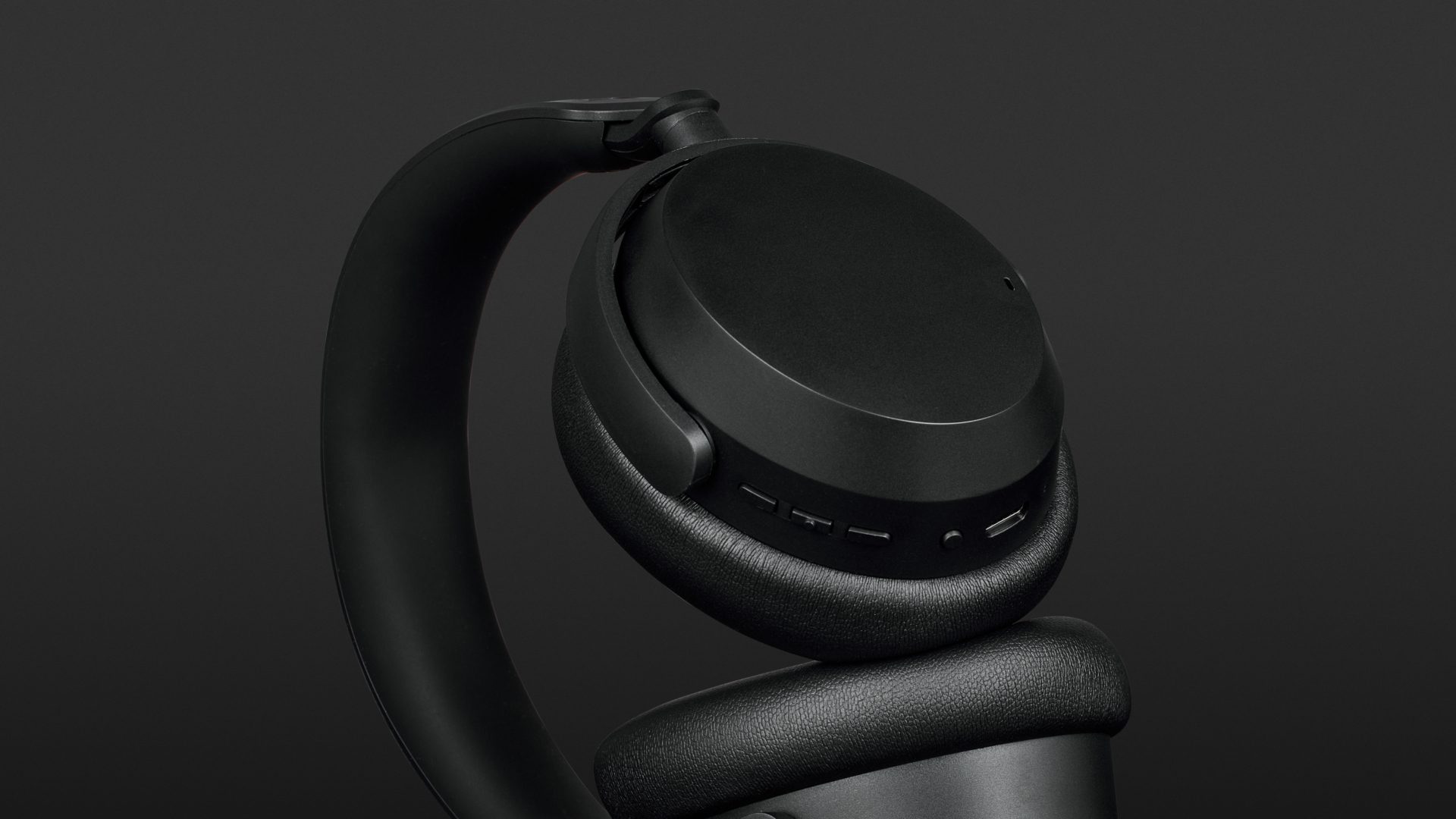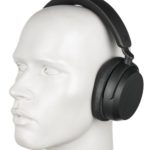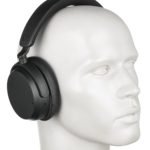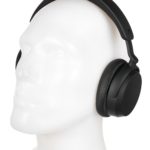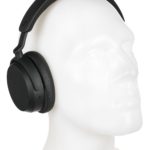50 hours of runtime on just one battery charge, modern sound tuning and a high level of wearing comfort – the new Sennheiser Accentum Wireless have an ultra-modern appearance and made (almost) no mistakes in our practical test. If the big Momentum 4 Wireless from the same manufacturer is too expensive, the Accentums give you a reason to give Sennheiser a second look in the “consumer over-ears – upper class” segment.
- Sound
- Noise cancelling
- Comfort
- Codec variety
- Battery life
- Occasional connectivity issues (Android)
If you are interested in high-quality Bluetooth over-ears, then you will have noticed how crowded the price range above 300 euros is at the moment. From Apple to Bose and Sony to Sennheiser, you’ll find plenty of upper-class headphones with premium features.

Sennheiser’s Momentum headphones have been a successful over-ear model series for years. In the summer of 2022, the Sennheiser Momentum 4 Wireless was released, and this latest major update impressed us not only with their sound but also their wearing comfort and battery life.
If you look at the range of products available below it, the mid-range of around 150 euros seems to be rather sparsely populated and has little appeal.
So it makes sense to launch a much more affordable pair of headphones into this section of the market, ones that carry the Momentum DNA and are packed with premium features: Welcome to the Sennheiser Accentum Wireless!
The differences between Sennheiser Accentum Wireless and Sennheiser Momentum 4 Wireless
Of course, you can tell that the Accentums are not Momentums: Slightly smaller drivers (37 instead of 42 mm diameter), which are therefore more delicate, ten hours less battery life, no touch surface, fewer accessories and instead of fabric there is a plastic covering on the headband. Also, some functions that are reserved for the big Momentums are missing from the app, such as the very useful auto-pause function.
Features and wearing comfort of the Sennheiser Accentum Wireless
These over-ears arrive stowed in a slim, environmentally-friendly cardboard box where they can be tucked away thanks to their rotating ear cups. The package also contains a USB-A to C charging cable (approx. 120 cm) and the usual documents (quick start guide, legal information) in various languages.
The Sennheiser Accentum Wireless headphones have a rail that enables size adjustment, which disappears into the headband. The headband discreetly bears the manufacturer’s logo on the left and right and is padded with a soft silicone lining that feels kind to the skin. There is also a notch for pressure relief. The thick, replaceable ear pads made of soft imitation leather have a diameter of approx. 4 cm x 6 cm and distribute pressure extremely pleasantly on and around the ears. As a wearer of glasses, I had no problems here: nothing pressed and the pads nevertheless sealed so well that the acoustic chamber under the ear pads always remained closed. In any case, the passive noise attenuation was very high.
From a subjective point of view, the contact pressure was a little too much for me; I had to take the headphones off my head after about 1.5 hours to relieve the pressure. However, experience shows that the longer you wear them (or carefully stretch them), the more the headband expands.
Bluetooth
The Sennheiser Accentum Wireless works with Bluetooth version 5.2. The codecs they support are SBC, AAC, aptX, aptX HD, mSBC and CVSD. The latter means “Continuous Variable Slope Delta Modulation” and describes a modulation method for voice data (read our guidebook “Bluetooth Standards Simply Explained”).
In our practical test, the Bluetooth stream proved to be extremely efficient: Inside an apartment, the first drop-outs only occurred when we changed floors in the opposite room; in an open space, we achieved a very good 35 metres.
Pressing and holding the small hardware button on the underside of the right ear cup for five seconds switches the headphones on and signals that they are ready for pairing. Multipoint, i.e. simultaneous connection with several (in this case two) devices, is supported.
Controlling the Sennheiser Accentum Wireless
The operation of the Sennheiser Accentum Wireless is straightforward and done entirely via buttons. Changing the volume, track skipping, pairing, switching on and off, ANC/transparency, call control, voice assistants and power management – a glance at the quick guide, and it is easy to remember the commands.
Smart Control App
With the Accentum, the functional and chic “Smart Control” app again acts as a hub to manage all Sennheiser headphones that can connect to your smartphone via Bluetooth.
A five-band EQ lets you tune the sound or select a suitable EQ curve from seven music genre pre-sets. These can be edited and saved. In addition, the app offers individual frequency adjustments by clicking through several sound profiles while your favourite music is playing. You can save this hearing-adapted EQ curve and repeat it as often as you like. This requires a free account with Sennheiser, but then you will be able to use your own EQ settings as well as sound zones (see below) across devices.
Here, there is also a special EQ pre-set for more intensive bass and one for podcasts, which ensures better speech intelligibility, especially by enhancing the mid-range.
It is also possible to adjust the transparency mode here: when this is activated, you can decide whether media content is paused or whether it continues to play. You can also set the level of wind noise reduction in the “Active noise reduction” section and deactivate/activate it.
The sound zones are also interesting; these let you decide how the headphones behave when you enter or leave certain places. You can, for example, configure whether the noise cancelling and individual EQ settings go off as soon as you approach your house. This allows you to define a corresponding action radius between 100 and 1,000 metres on a map.
Another important feature of the app is the sidetone function. This enables you to mix in your own voice during phone calls.
In practice, the connection between the headphones and the app worked extremely reliably with an iPhone and without any shortcomings worth mentioning. It was only when we tried them with a Google Pixel 6a that the app failed to recognise the headphones a few times despite an active connection. But restarting the smartphone solved this problem.
Battery performance
The Sennheiser Accentum Wireless promise a full 50 hours of playtime (manufacturer’s specifications) with noise cancelling activated. These are ideal values that can only be achieved if a medium volume is maintained. In practice, these values – depending on external influences – were therefore never entirely accurate. Thanks to the quick-charging feature, however, ten minutes plugged into the USB cable were enough for five hours of music fun; it takes about 3 hours to fully charge the battery. These are outstanding statistics!
Noise cancelling (ANC) and transparency mode
Here, too, there are differences from the Sennheiser Momentum 4 Wireless. While the Momentum works adaptively, i.e. it automatically adjusts to the noise level of the environment, the Accentum’s hybrid ANC works statically.
The slight background noise was negligible and hardly noticeable. It was only apparent in silence and very quiet environments.
But how effective was the active noise cancellation? Well, the ANC packs a punch – especially in the low-frequency range. Static noise was effectively suppressed, and the mids and highs also experienced a decent attenuation. Keyboard clatter was still slightly perceptible and voices were muffled. The noise cancelling can, therefore, be described as absolutely practical.
The same applied to the transparency mode. This amplifies environmental noises so that things like train announcements or conversations can be heard without removing the headphones. They do this well – despite audible background noise – yet the Apple AirPods Max remain the benchmark in terms of “naturalness” in our tests.
A final tip: If you – like me – always adjust the fit of the headphones and, therefore, reach for the ear cups, you need to be careful not to accidentally swipe over the small microphone openings. This rustling was acknowledged by nasty amplification that sounds extremely unpleasant. In fairness, it should be noted that Sennheiser does mention this in the operating instructions.
Sound of the Sennheiser Accentum Wireless
Sound-wise, the Sennheiser Accentum Wireless can be considered (almost) faultless unless you’re looking for headphones that sound quite neutral in a studio style. If this is what you are after, then the Accentum do not provide it without any EQ.
The modern tuning reproduced low frequencies with presence, and this could be a bit too much for energetic basses at higher volumes, especially as it was also at the expense of richness of detail. If you then switch on the bass boost via the app, you are rewarded with booming bass (e.g. Missy Elliott’s “WTF”). This function was fun, especially with older songs, when a well-rounded foundation is important (e.g. Grace Jones’s “Slave To The Rhythm”).
The mid-range seemed to be somewhat reduced when a lot was going on in the bass range. Here, the drivers can swallow up the finest details (e.g. Amber Rubarth’s “Strive”). The Accentum Wireless reproduces voices cleanly so that they are clearly understandable. If you listen to a lot of podcasts, you will benefit from better speech intelligibility, thanks to special circuitry. However, depending on the voice, sharp S-sounds started to hiss slightly above approx. 83 dB. The highs seemed capped, so that crisp music tracks (e.g. Madonna’s “Jump”) did not sound exhausting – accordingly, hearing fatigue takes a while to set in.
These headphones implemented the virtual stage neatly: Panoramic movements, both horizontally and vertically, always remained detectable and nicely spread out despite the limitations inherent in the design of a closed system.
Finally, we should mention that the Sennheiser Accentum Wireless can also work with a cable. The term “Wireless” in the product name should then simply be ignored. When connected to a computer or “mobile device” via a USB-C cable, the headphones can be used as an audio interface and this includes battery charging. It worked very well with a MacBook, meaning that the Accentum can even be used during video conferences or for making music. It was a bit of a pity that the supplied cable was still equipped with a USB-A plug at one end. With modern laptops, an appropriate adapter or USB-C to C cable must be used.
Telephony
Thanks to beamforming microphones, the voice reached the party on the other end of the call clearly and distinctly. However, they noticed a slight modulation in my voice. Unfortunately, I can’t say exactly what that was. However, my conversation partner could be heard clearly. Thanks to wind and noise suppression, an extended quiet room is created during phone calls, even if not everything is 100 per cent erased.
Conclusion
To our ears, the Sennheiser Accentum Wireless do everything right: They sound good to very good, and this can be adjusted according to one’s own taste thanks to the equaliser and a form of listening test, and they still fit extremely comfortably. The codec varieties and cable mode also make them flexible to use: for office work, music production or on holiday. The long-lasting battery with up to 50 hours, together with the super-fast turbocharger and noise cancelling, complete the package of what Sennheiser calls “wireless all-purpose headphones with Momentum DNA”.
Technical specifications
- Ear couplingOver-ear
- Typeclosed
- Transducer principledynamic
- Frequency response (headphones)10 - 22.000 Hz
- Sound pressure level (SPL)@1 kHz/0 dBFS: 106 dB
- Weight without cable224 g
- Cable length120 cm
What's in the box
- USB charging cable
Special features
- Available in black and white/sandstone
- BT codecs: SBC, AAC, aptX, aptX HD, mSBC, CVSD
- BT version: 5.2
- BT profiles: A2DP, AVRCP, HFP, HSP, GATT









